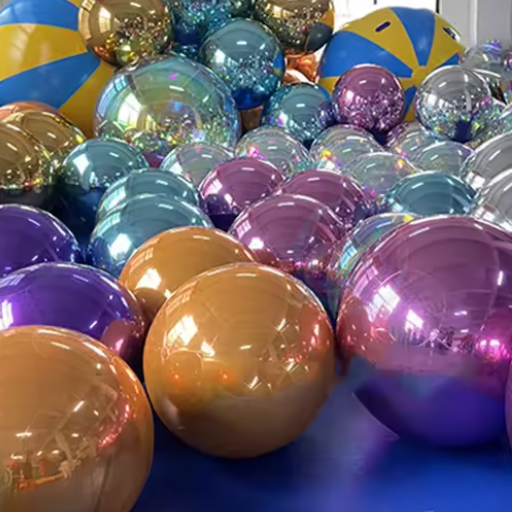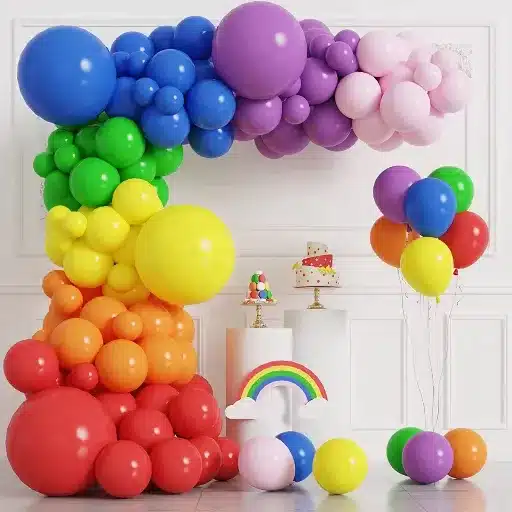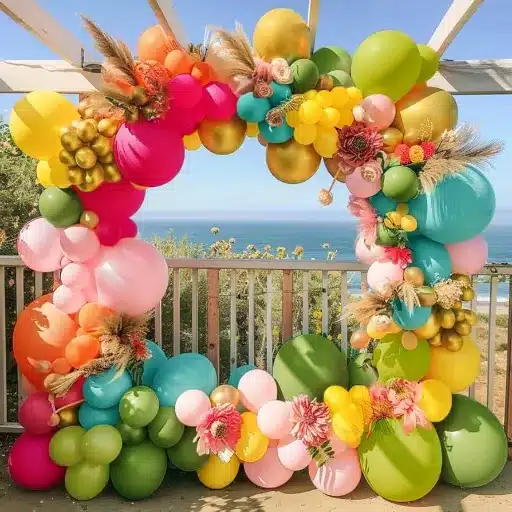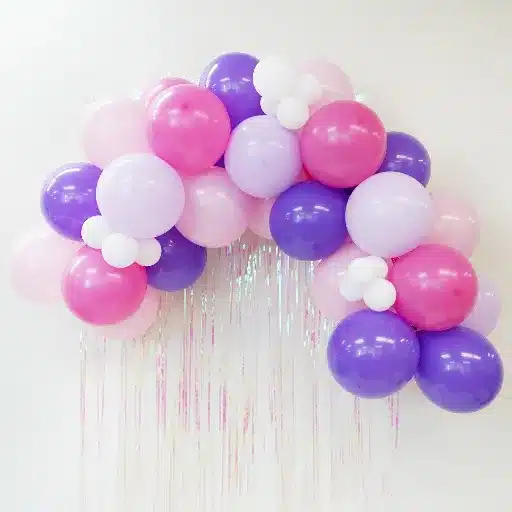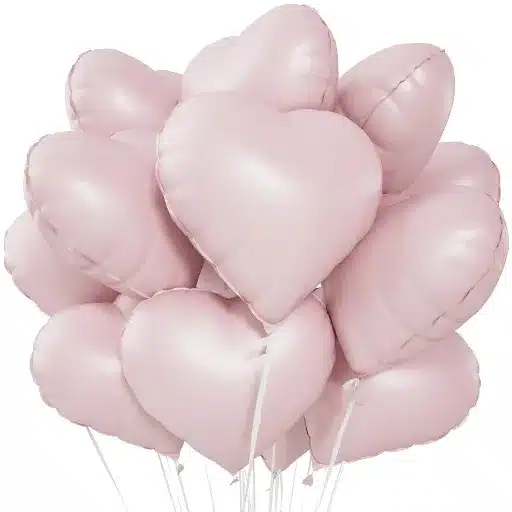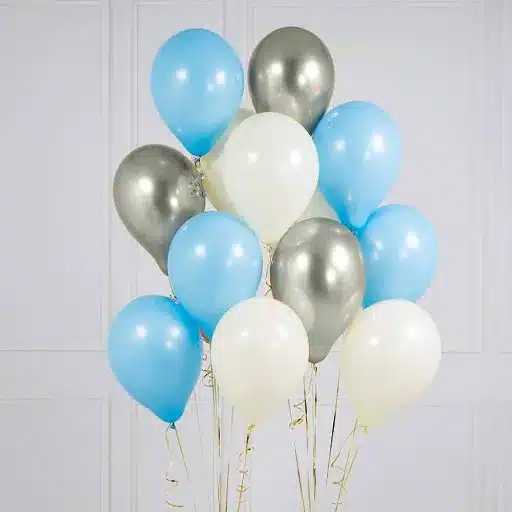Much like any beautiful ornament in the sky, balloons somehow bestow onto any celebration a dreamy status. But being special, foil balloons are the real elegant ones- their multi-hues, gleaming finishes, and interesting shapes make them the most sought-after for occasions, be it birthdays, weddings, or other distinguished events. Still, inflating foil balloons is not as straightforward as it appears sometimes. Maybe you are doing it for the first time or want to perfect your technique-fear not, for this step-by-step guide will walk you through inflating foil balloons, so the balloons look their best and last as long as possible. We have covered everything, at least the things you need, tips on avoiding common mistakes, and more, to win the art of inflating foil balloons with ease and confidence.
Understanding Foil Balloons
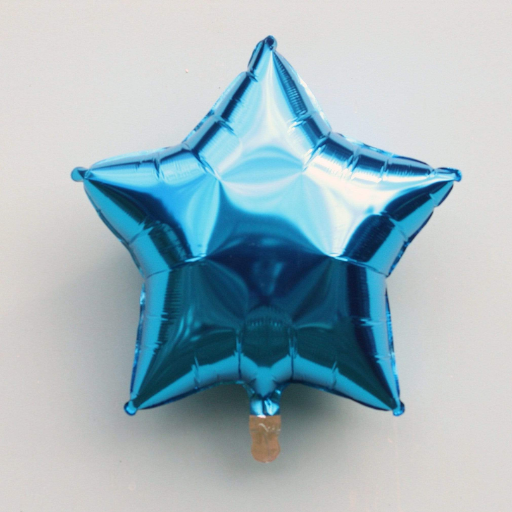
Foil balloons, or Mylar balloons, are made from a thin, flexible material created from layers of metal and plastic. They are popular because they are very durable and don’t let helium out as quickly as latex balloons, so they float longer. Furthermore, these balloons’ shiny, reflective surfaces make incredible celebration decorations. They are available in various designs, shapes, and sizes that appeal to different tastes and event themes. Also, foil balloons are less porous when compared to latex, which prevents helium from rapidly escaping, thus allowing these balloons to float for several days when correctly filled.
What are Foil Balloons?
Foil balloons are helium-retaining, shiny decorative items made from thin, pliable plastic and metal composite sheets. Due to their durability and designs, they are usually favored for celebrations.
Benefits of Using Foil Balloons
|
Key Point |
Details |
|---|---|
|
Longer Float Time |
Can stay inflated for days or weeks. |
|
Durability |
Less prone to popping compared to latex. |
|
Reusable |
Can be deflated and reinflated multiple times. |
|
Helium Retention |
Holds helium longer than latex balloons. |
|
Customizable Designs |
Allows intricate and high-quality printing. |
|
Variety of Shapes |
Available in letters, numbers, and themed shapes. |
|
Shiny Appearance |
Metallic finish adds elegance and visual appeal. |
|
Non-Allergenic |
Safe for people with latex allergies. |
|
Eco-Friendly Option |
Some are recyclable and reusable. |
|
Cost-Effective |
Reusability reduces long-term costs. |
Common Sizes and Shapes
Foil balloons vary widely in size and shape, giving them maximum versatility for various events and occasions. Small balloons in the 4-to-14-inch category are great for accenting gifts or decorations. Medium balloons of 18 inches are the most popular and are used extensively for parties and celebrations. Larger balloons, measuring 24 to 36 inches, stand out as centerpieces or showcase statement pieces in large venues.
They also let you choose from myriad shapes corresponding to every conceivable theme. Common shapes range from round balloons to star and heart-shaped ones, widely used for birthdays, weddings, and romantic celebrations. Beyond these are more complicated shapes like numbers and letters that let people spell out custom messages or mark special milestones such as anniversaries or ages. Themed foil balloons representing cartoon characters, animals, or holiday motifs are great for kids’ parties and seasonal celebrations.
Talk of oversized statement-making foil balloons, such as 40-inch letters or custom shapes, gaining the spotlight atop the trend chart: What better way to decorate a wedding, corporate event, or photo backdrop? Their sturdy nature makes them stand out as decorative pieces that can remain inflated and retain their charm for days.
Tools Needed to Inflate Foil Balloons

The typical equipment necessary for blowing up foil balloons is:
- Helium Tank: Perfect for filling balloons so that they float. They are available in small and large sizes, corresponding to the events for small and large ones.
- Hand Pump: This is used for substantial inflating when helium is not applied, mainly for decorations that will not float.
- Balloon Inflator with Nozzle: These can be manual or electrical, and they are made specifically for balloons so that they can be inflated quickly.
Be sure to follow all instructions similar to those of the manufacturer to avoid over-inflating or damaging the balloon.
Best Tools for Inflating Foil Balloons
Having the right tools is essential for better results and to avoid damaging foil balloons. Here are some of the best tools considered:
- Here is the Helium Tank with Adjustable Nozzle: A helium tank with an adjustable nozzle is perfect for filling foil balloons to just the right level. Compared to latex balloons, foil balloons demand less helium. An adjustable nozzle will help regulate the flow to prevent over-inflating the balloon, leading to its bursting. The regular guide on using helium tanks states that it can fill about 50 – 100 balloons of standard size, depending on the tank size.
- Electric Flow Low-Pressure Balloon Pump: A flow-type balloon pump is mainly used for latex balloons; however, many electric pumps provide a low-pressure setting that suits foil balloons. This allows for a steady, low flow on these balloons, which are more subject to damage due to full-intensity inflation. Another good feature for most types is that they come with interchangeable nozzles for different balloon sizes.
- Hand Pump with a Fine Tip: A cheap and efficient way to inflate foil balloons is to use a manual hand pump with a fine-tip nozzle. These pumps allow for absolute control over the process and work against over-inflation. Plus, their lightweight and portability suit small-scale event set-ups.
Tips to Remember:
- Always inflate foil balloons slowly to avoid tearing the material along the seams.
- Stop inflating when the balloon looks firm yet smooth; overfilling will weaken the seams.
- In the case of self-sealing foil balloons, sealing across the opening tightly after inflation keeps the helium or air intact, giving it a longer life span.
Following these tools and methods can guarantee the safe and quick inflation of foil balloons, keeping their vibrant appearance intact for the occasion.
Using a Straw for Inflation
Using a straw to inflate foil balloons is simple. Insert the straw into the balloon’s valve and blow gently until it is firm. Snip the straw from the balloon, pinching the valve tightly to seal it securely.
Other Equipment Options
Regarding inflating foil balloons, the equipment available for this purpose caters to every need and preference. Here are the five tried-and-tested tools:
- Electric Balloon Pump
Electric balloon pumps are fast and reliable machines that can easily handle large events or parties. They can inflate about three balloons within seconds, drastically reducing the total preparation time. The best thing about electric pumps is the dual nozzles for simultaneous inflation.
- Portable Hand Pump
A portable hand pump is light and cheap, and it is ideal for inflating a few balloons. Its ease of use and the fact that it does not require electricity make it ideal for use on the road or at any outdoor event.
- Helium Tanks
Popular for making floating foil balloons, helium tanks are disposable and refillable. They allow you to liquidate balloons quickly and guarantee buoyancy for hours. Always follow the safety instructions while operating the helium tank.
- Air Compressor with a Balloon Nozzle
Working with an air compressor attached to a balloon nozzle can ensure the inflation of a larger number of balloons. This option best suits professionals or decorators organizing an extensive balloon display.
- Manual Foot Pump
A manual foot pump gives a hands-free method for inflating balloons. It is a pump you work with your foot going up and down (pedalling). This filling is easy and requires little effort, plus you need no electricity at all; another bonus is that it is environmentally friendly and portable.
Step-by-Step Instructions to Inflate Foil Balloons
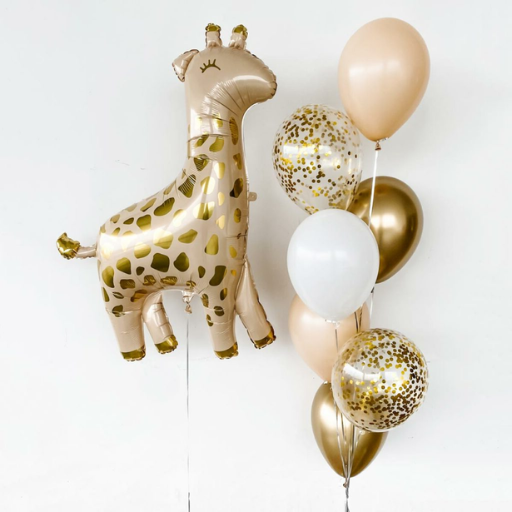
|
Step |
Instruction |
|---|---|
|
Gather Materials |
Balloon, helium tank, or air pump. |
|
Locate Valve |
Find the self-sealing valve on the balloon. |
|
Attach Nozzle |
Insert the nozzle into the valve gently. |
|
Inflate Slowly |
Fill the balloon until firm but not overinflated. |
|
Remove Nozzle |
Gently pull the nozzle out of the valve. |
|
Seal Balloon |
Valve self-seals; no tying needed. |
|
Add Weight |
Attach a weight to prevent the balloon from floating away. |
|
Check for Leaks |
Ensure no air or helium escapes. |
Preparing the Balloon
Before preparing the balloon, I locate the self-sealing valve, usually at or near the base of the foil balloon. I ensure the valve is open and unobstructed before attaching it to the nozzle of my inflation device. From this point onward, if I manually inflate it with a hand pump or fill it with helium from a tank, I ensure that the nozzle is meticulously placed into the valve to achieve a perfect airtight seal.
Inserting the Straw into the Tab
When inserting the straw into the tab of the foil balloon, first identify the small plastic flap just inside the self-sealing valve. It acts as a seal to prevent air from escaping from the balloon. Push the straw into the valve, sliding it underneath the flap. Make sure that the straw is inserted deep enough to open the airflow path, usually about an inch or two. Online tips have lately suggested that a straw with a smooth, rounded edge can help prevent inadvertently puncturing the valve.
For best results, remember to insert the straw in line with the natural angle of the valve so that the valve is not damaged during inflation. If you want to deflate the balloon instead, ensure the straw goes further to break the seal fully and allow the trapped air to escape. Many have discovered that a 0.2–0.25-inch diameter straw is ideal for most of the standard foil balloons currently being offered on the market.
Blowing Air into the Balloon
- Selecting the Right Pump: Either a hand pump or an electric pump would efficiently blow air into the balloon. Hand pumps are portable and easy to use, while electric pumps offer speed when inflating many balloons.
- Insert the Pump Nozzle: Insert the pump nozzle into the balloon’s valve. It should fit securely so air does not escape while the balloon is inflated.
- Pump Air Slowly: Start pumping air slowly into the balloon. Keep a steady pace for even inflation so the balloon is not distorted.
- Watch the Shape and Size of the Balloon: Pay attention to how the balloon expands. Stop inflating when the balloon feels too tense or might burst. Most standard foil balloons specify the maximum size they can maintain, often in inches.
- Close the Valve Tightly: When the balloon is suitably inflated, remove the pump nozzle carefully and allow the valve to close tightly. Some foil balloons have self-closing valves, so this procedure can be done quickly and effortlessly. Otherwise, press around the valve area gently to ensure no air escapes at that time.
Pinching the Straw and Removing It
To unseal the foil balloon after inflating it, try to make a firm seal to ensure the air or helium inside the balloon does not escape.”,
Step 1: Hold the Valve Gently: Use one hand to pinch the valve around the straw or nozzle gently. This will keep the air or helium inside the balloon while the other hand removes the straw.
Step 2: Take Out the Straw Slowly: Slowly start to remove the straw with your free hand; it is important to be slow, as something in the valve can get damaged, or air may escape if you withdraw abruptly.
Step 3: Observe for Leaks: After the straw is completely withdrawn, observe the valve keenly, looking for any air leak. If the air is escaping in a minute amount, just pressing gently around the valve area can probably seal it.
Relevant Information and Considerations
It has been observed that foil balloons, made from durable materials such as polyethylene or nylon, have self-sealing valves that last 5 to 7 days for air or helium, depending on the balloon size and quality. Minor leaks that can occur during improper handling of the removal process are mainly responsible for the early deflation of such balloons.
Additionally, the research asserts that using a good-quality straw or nozzle can improve the inflation and sealing process, thus preventing up to 30% of cases where valve damage occurs. Also, consider maintaining room temperature while inflating, as extreme heat or cold weakens the valve material.
Following the steps above and considering the considerations provided can greatly help you keep the foil balloon inflated and vibrant for longer use in parties, decorations, or ceremonies.
Tips to Prevent Popping or Tearing
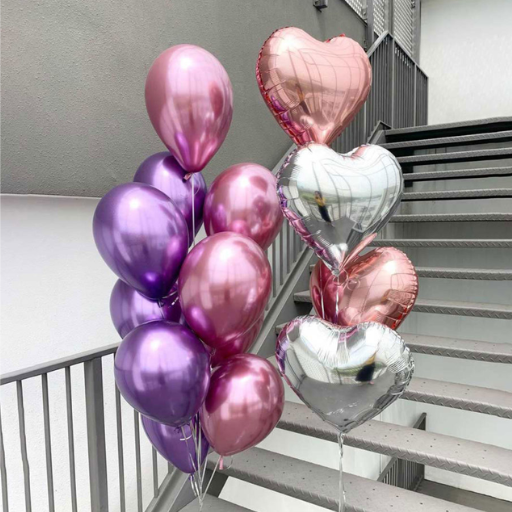
|
Tip |
Details |
|---|---|
|
Avoid Overinflation |
Inflate until firm, not overly tight. |
|
Keep Away from Heat |
Avoid direct sunlight or high temperatures. |
|
Handle with Care |
Avoid sharp objects or rough surfaces. |
|
Use Proper Tools |
Inflate with a pump or a helium tank. |
|
Store Properly |
Keep in a cool, dry place when not in use. |
|
Inflate Indoors |
Inflate in a controlled environment. |
|
Use Balloon Weights |
Prevent balloons from floating into hazards. |
|
Avoid Overcrowding |
Give balloons enough space to prevent friction. |
Choosing the Right Size Balloon
Size selection is crucial to ensure balloons will not get popped, hence maintaining the aesthetics of your delicate decorations: A larger size means longer work and bigger smiles. Size categories and the associated details that are commonly recognized in the industry:
- 5-Inch Balloons
These are suitable for tiny decorations, intricate designs, or just fillers for balloon bouquets. Close-up displays normally work with them, and their small sizes allow little chance of tearing them.
- 9-Inch Balloons
They are perfect for making medium-sized clusters or centerpieces. In doing so, they retain the versatility of the work and are quite hard to damage when carefully handled.
- 12-Inch Balloons
One vastly preferred size is employed as general decor for parties, arches, and columns. When seen from afar, the impact created by them is half the size, again resisting the urge of overinflation.
- 18-Inch Balloons
They should be used for a larger statement in your decorations, like themed pieces or photo backdrops. Although they are prone to damage from their maximum filling, they are rewarded in visual appeal.
- 36-Inch Balloons (Jumbo)
They would be the jaw-dropping component in any decor with an outdoor ambience. When handled carefully and cautiously, these giant balloons are more complex to rupture than their medium counterparts, especially in strong winds or hot conditions.
Choosing the right size depends upon your decor objectives, environment, and, again, the use of balloons. By doing so, you may retain the value of aesthetics and time-wearability in your setup.
Proper Inflation Techniques
A balloon’s Proper inflation is required for an attractive and long-lasting setup. Here are five elaborate methods to ensure the best results:
Use of a Balloon Pump or Inflator
Manual or electric balloon pumps help keep air pressure uniform and avoid overinflating. The electric-type pump works best when multiple balloons are being inflated simultaneously.
Measure Balloon Size
Using a balloon sizer is handy for ensuring that the balloon is not overfilled or underfilled. Having the balloon fit the intended diameter gives it more strength and fewer chances of bursting.
Air versus Helium: What to Choose?
For a display that should last as long as possible, here is a wise recommendation: air versus helium. Air is the longer-lasting alternative, especially if it is an outdoor setup. Helium leaks away faster and also responds to temperature changes.
Inflate Properly Shaped
Balloons filled should be judged by their round shape—unless the balloon gets overfilled, it tends to become tall and oblong, thereby inducing greater stress on latex or foil and thus more susceptible to rupture.
Adjust for Weather Conditions
In hot or sunny conditions, balloons are inflated just a little less; otherwise, those balloons will expand under the heat and pop. In more extraordinary situations, balloons contract a little and need more inflation.
Thus, following these guidelines will ensure the professional look of the display while granting the balloons great endurance.
Monitoring Environmental Factors
When creating a balloon display, it is necessary to comprehend and manage environmental factors that affect the quality and longevity of your setup. These factors include temperature, humidity, wind, and direct exposure to sunlight; the effect of each one on balloons is immense.
- Temperature
The higher temperature causes the air or helium inside balloons to expand and eventually burst. For instance, a research study has found that latex balloons expand by as much as 10% in direct sunlight at temperatures of at least 86°F (30°C). Conversely, at a very low temperature, the balloons tend to lose their form as the gas inside shrinks. So either place them away from such extremes of temperature or compensate accordingly when inflating.
- Humidity
High humidity softens the latex material, thereby degrading the balloon quickly. For long-lasting displays, you should use balloons treated with a longevity solution such as Hi-Float, which may dramatically increase float time in humid climates.
- Wind Conditions
Wind is the usual wearer of any outdoor balloon display. Sudden gusts may force balloons into abrasive surfaces, making them more prone to popping. To prevent such things, make sure your balloon arrangements are anchored or weighted down well and consider situating them in a protected area.
- Sunshine Exposure
UV rays degrade the latex material, making it brittle over time. Data has shown that balloons last many times longer in shade or indoors than when exposed to direct sunlight for prolonged hours. The longevity can be further increased by using UV-resistant balloons or protective coatings.
- Proper Storage Before Use
Before inflation, protect balloons from long exposure to extremes. Storing the balloons in a cool, dry place will keep them elastic and strong for a more reliable display.
Implementing the above measures and carefully monitoring environmental conditions will further assure the successful setup and lifetime of your balloon arrangements for an outdoor event or an indoor celebration.
Creative Ideas for Using Foil Balloons
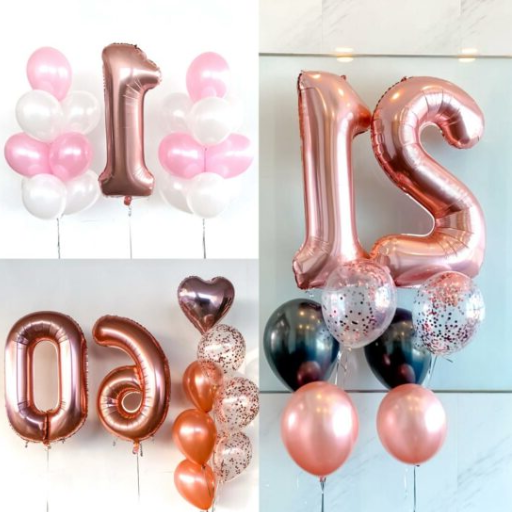
| Idea | Details |
|---|---|
|
1. Themed Party Decor |
Use character or number balloons for themes. |
|
2. Photo Backdrops |
Create shiny, eye-catching photo backgrounds. |
|
3. Balloon Arches |
Combine foil and latex for stunning arches. |
|
4. Table Centerpieces |
Use small foil balloons as table decor. |
|
5. Gift Add-Ons |
Attach balloons to gift bouquets or baskets. |
|
6. Event Signage |
Spell out names or messages with letters. |
|
7. Ceiling Decorations |
Float balloons to create a dreamy ceiling. |
|
8. Outdoor Markers |
Use balloons to guide guests to the venue. |
|
9. Corporate Branding |
Print logos for promotional events. |
|
10. Holiday Themes |
Use heart, star, or tree shapes for holidays. |
Decorating for Special Events
The ever-versatile finishes and foil balloons’ designs can enhance any special event’s decorative schemes. The following are five ideas of how to use foil balloons as part of the decorations:
Thematic Backdrops
Combine foil balloons with the chosen theme to create fabulous backdrops worthy of being photographed. For instance, a metallic gold and silver palette would complement a New Year’s Eve party, while brightly colored foil balloons with images of cartoon characters would be appropriate for a kids’ birthday party.
Table Centerpieces
Smaller foil balloons can be incorporated into elegant table centerpieces. Combine them with flowers, candles, or decorative glassware to create a celebratory ambience that complements the table’s décor.
Balloon Arches and Garlands
Combine foil balloons with latex balloons for stunning balloon arches or garlands. These work fabulously as entrance statements for weddings, anniversaries, and corporate occasions.
Custom Messages
Spell names, dates, or phrases with letter or number foil balloons to give an extra feel of personalization to celebrations like baby showers, graduations, or milestone birthdays.
Floating Balloon Clouds
Large foil balloons filled with helium can be arranged at different heights to resemble cloud formations. This works well for whimsical birthday parties or romantic outdoor weddings.
With such ideas, foil balloons can make any party unforgettable with striking visuals.
Unique Balloon Arrangements
- Balloon Garlands and Arches
The balloon garlands and arches are becoming ubiquitous in the industry because of their versatility and huge visual impact. These installations can be customized by size, color, and pattern to align with the theme of any event. Some party planners’ data indicate that there’s been an almost 150 percent increase in the searches for “DIY Balloon Garlands” in the past two years, reflecting their growing demand for use at personal and professional occasions. Use metallic or transparent balloons to sparkle glamorously and pastel hues for a more subdued look.
- Eco-Friendly Balloon Arrangements
With an increased awareness of sustainability, eco-balloon arrangements are sought after more and more. Searches for “biodegradable balloons” have increased by over 70% in the past year. Use latex balloons made from natural rubber; hence, they are biodegradable. Remember that plastic ties would defeat the purpose of being yellow, eco-friendly, so opt for twine instead. Pair these with foliage or dried flowers for a natural and eco-chic touch suitable for weddings or any green affair.
- Themed Balloon Backdrop
Themed balloon backdrops serve as an attention-grabbing photo focal point for any event. For instance, balloon walls with ombré colors or floral touches make a worthy photo format or stage décor. Event planners agree that photo-worthy balloon backdrops are some of the most tagged décor elements on social media sites like Instagram; the high demand is evident. Going beyond, more complicated forms like characters for kiddie parties or geometric motifs for contemporary ones bring the event’s design to a whole new level.
Through these unconventional balloon formation ideas, trends, and sustainable options, you can surely provide for an unforgettable experience at your fiesta.
Incorporating Foil Balloons into Themes
Foil balloons can be utilized for several inventions to adorn a thematic party as a fine finish. Their shiny surface adds finesse and grandeur and creates visual statements worthy of attention. Below are five interesting attractions to infuse foil balloons with your themes:
- Birthday Parties
Number, letter, or character-shaped foil balloons can be used to make the celebration personal. Oversized numbers for milestone birthdays or favorite cartoon characters for kids are favorites.
- Weddings
Foil balloons in metallic colors like gold, silver, or rose gold can subtly complement wedding decor. Heart-shaped balloons or Mr. and Mrs. lettering styles are currently trendy.
- Baby Showers or Gender Reveals
Pastel-colored or gender-specific foil balloons like “It’s a Boy/Girl” bring a little sparkle to the occasion. Star-shaped or moon-shaped balloons would fit right in with these celebrations.
- Seasonal Holidays
Let Christmas, New Year’s Eve, Halloween, and more boast festive foil balloons. Snowflakes, bats, champagne bottles-let them brighten the vibe for the festivities!
- Corporate Events
Let logo—or message-themed foil balloons promote brand visibility or champion the gathering’s objective. This will give it a vibrant yet professional atmosphere.
When carefully considered along with an event’s theme, foil balloons can be the epitome of a cohesive and striking setup that will mesmerize guests.
References
-
“Ballooning across the curriculum”
This academic work discusses various aspects of balloon usage, including inflation techniques.
Read more here -
“Abstracts from the 2016 AHAC conference”
This document includes discussions on foil balloons and their properties, including inflation methods.
Read more here -
“Balloons On The Beach: Where Are Balloons Coming From, And How Can We Prevent Their Escape Into The Environment?”
This NOAA repository document provides insights into foil balloons, their environmental impact, and related handling techniques.
Read more here
Frequently Asked Questions (FAQ)
What materials do I need to inflate foil balloons?
To inflate foil balloons, you will need a helium tank or air pump, the balloons themselves, and optionally a ribbon for tying them. If you’re using a helium tank, ensure it’s filled and ready for use.
Can I inflate foil balloons with regular air?
You can inflate foil balloons with regular air using a manual or electric pump. However, remember that inflated foil balloons with air will not float like those filled with helium.
How do I properly inflate foil balloons?
To properly inflate foil balloons, insert the nozzle of your helium tank or air pump into the balloon’s opening. Inflate the balloon gently, ensuring you don’t overinflate it, as this can cause it to burst. Once inflated, pinch the neck of the balloon and tie it securely to prevent air from escaping.
What is the best way to tie foil balloons?
The best way to tie foil balloons is to pinch the neck tightly after inflating, then create a loop and knot. If you’re using a ribbon, loop it around the neck before tying it to secure the balloon further.
How long do foil balloons stay inflated?
Foil balloons can stay inflated for several days to weeks when filled with helium, depending on the environment. They generally last longer than latex balloons due to their non-porous material, which minimizes air loss.
Can I reuse foil balloons after deflating them?
Yes, foil balloons can be reused after deflating. Store them in a cool, dry place, and you can inflate them again later. Just ensure they are clean and free from punctures before reuse.
Are there any safety tips for inflating foil balloons?
When inflating foil balloons, be cautious with helium tanks and ensure you are in a well-ventilated area. Avoid overinflation and never inhale helium, as it can be dangerous. Additionally, balloons should be kept out of reach of small children to prevent choking hazards.
Can I use a straw to inflate foil balloons?
Using a straw to inflate foil balloons is possible, but not recommended. It may not create a tight seal and could allow air to escape. For the best results, it’s best to use a proper pump or helium tank.
What types of foil balloons are available?
Various types of foil balloons are available, including shaped balloons, letter balloons, and themed balloons for different occasions. Each type can add a unique touch to your celebration or event.
How do I store inflated foil balloons?
To store inflated foil balloons, keep them in a cool, dry area away from direct sunlight and sharp objects. If you plan on storing them for an extended period, consider deflating them to prolong their life.

